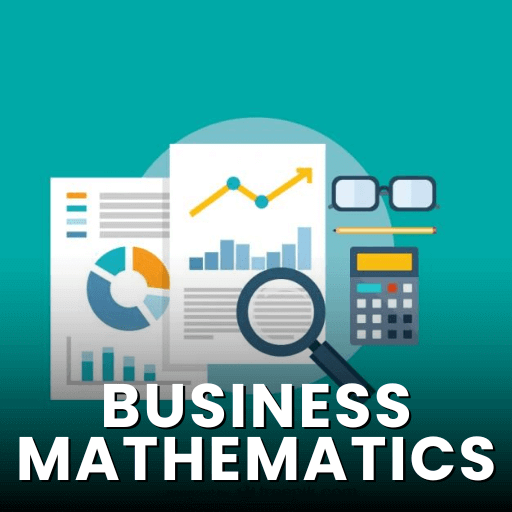Best Study Material for CA Foundation Exam
CA Foundation Exam > CA Foundation Notes > Accounting for CA Foundation > PPT - Bills of Exchange and Promissory Notes - 3
PPT - Bills of Exchange and Promissory Notes - 3 | Accounting for CA Foundation PDF Download
| Download, print and study this document offline |
Please wait while the PDF view is loading
Page 1 CPT Section A Fundamentals of Accounting Unit 2 CA.Gautam Chawla Page 2 CPT Section A Fundamentals of Accounting Unit 2 CA.Gautam Chawla ? Joint Venture 2 Ram coventurer Sham Coventurer Ram has his own work Sham has his own work They both enter into a venture which is known as joint venture Page 3 CPT Section A Fundamentals of Accounting Unit 2 CA.Gautam Chawla ? Joint Venture 2 Ram coventurer Sham Coventurer Ram has his own work Sham has his own work They both enter into a venture which is known as joint venture A Joint Venture is a very short duration “business” (generally, confined to a single transaction, like, buying some surplus stores and selling them) entered into by two or more persons jointly. Joint Venture may be described as a temporary partnership between two or more persons without the use of the firm name, for a limited purpose. 3 Page 4 CPT Section A Fundamentals of Accounting Unit 2 CA.Gautam Chawla ? Joint Venture 2 Ram coventurer Sham Coventurer Ram has his own work Sham has his own work They both enter into a venture which is known as joint venture A Joint Venture is a very short duration “business” (generally, confined to a single transaction, like, buying some surplus stores and selling them) entered into by two or more persons jointly. Joint Venture may be described as a temporary partnership between two or more persons without the use of the firm name, for a limited purpose. 3 Venture may be for the construction of a building or a bridge, for the supply of certain quantity of materials or labour and even for the supply of technical services. The persons who have so agreed to undertake a Joint Venture are known as ‘Joint Venturers’ or ‘Co-Venturers’. 4 Page 5 CPT Section A Fundamentals of Accounting Unit 2 CA.Gautam Chawla ? Joint Venture 2 Ram coventurer Sham Coventurer Ram has his own work Sham has his own work They both enter into a venture which is known as joint venture A Joint Venture is a very short duration “business” (generally, confined to a single transaction, like, buying some surplus stores and selling them) entered into by two or more persons jointly. Joint Venture may be described as a temporary partnership between two or more persons without the use of the firm name, for a limited purpose. 3 Venture may be for the construction of a building or a bridge, for the supply of certain quantity of materials or labour and even for the supply of technical services. The persons who have so agreed to undertake a Joint Venture are known as ‘Joint Venturers’ or ‘Co-Venturers’. 4 Understand special features of Joint Venture transactions, Learn the techniques of preparing Joint Venture Account and also the settlement of accounts with the co-venturer(s), Familiarise with the use of Memorandum Joint Venture Account, Learn the technique of deriving venture profit and its allocation among the venturers, Distinguish joint venture with partnership. 5Read More
|
68 videos|160 docs|83 tests
|
FAQs on PPT - Bills of Exchange and Promissory Notes - 3 - Accounting for CA Foundation
| 1. What is a bill of exchange? |  |
| 2. What is a promissory note? |  |
A promissory note is a written promise made by one party (the maker) to pay a certain sum of money to another party (the payee) at a specified date or on demand. Unlike a bill of exchange, a promissory note does not involve the direction to a third party for payment. It is a legally enforceable instrument that serves as evidence of a debt.
| 3. What are the differences between a bill of exchange and a promissory note? |  |
The main differences between a bill of exchange and a promissory note are:
- Parties involved: A bill of exchange involves three parties: the drawer, the drawee, and the payee. A promissory note involves two parties: the maker and the payee.
- Direction for payment: In a bill of exchange, the drawer directs the drawee to pay the specified amount to the payee. In a promissory note, the maker directly promises to pay the payee.
- Negotiability: A bill of exchange is a negotiable instrument, meaning it can be transferred or endorsed to another party, who becomes the new payee. A promissory note is non-negotiable, and the payee cannot transfer the rights to another party.
- Involvement of a third party: A bill of exchange involves the drawee, who is typically a bank or financial institution. A promissory note does not involve a third party for payment.
| 4. What are the essential elements of a bill of exchange? |  |
The essential elements of a bill of exchange include:
- Unconditional order: The order to pay must be unconditional, meaning it is not subject to any conditions or contingencies.
- Signed by the drawer: The bill must be signed by the drawer, who is the party making the order.
- Certain sum of money: The bill must specify the exact amount of money to be paid.
- Payee's name: The bill must mention the name of the payee, who will receive the payment.
- Date of payment: The bill must indicate the date on which the payment is due.
- Drawee's name: The bill must identify the drawee, who is the party ordered to make the payment.
| 5. What are the advantages of using bills of exchange and promissory notes in commercial transactions? |  |
Some advantages of using bills of exchange and promissory notes in commercial transactions include:
- Flexibility: They provide flexibility in payment terms by allowing parties to agree on a future payment date or the option of immediate payment.
- Ease of transfer: Bills of exchange are negotiable instruments, allowing for easy transfer of rights to another party. This can facilitate trade and financing arrangements.
- Legal enforcement: Both bills of exchange and promissory notes are legally enforceable instruments, providing a legal recourse in case of non-payment.
- Evidence of debt: They serve as written evidence of a debt, providing clarity and documentation of the transaction.
- Widely accepted: Bills of exchange and promissory notes are widely accepted in commercial transactions, making them a recognized and trusted form of payment.
Related Searches































